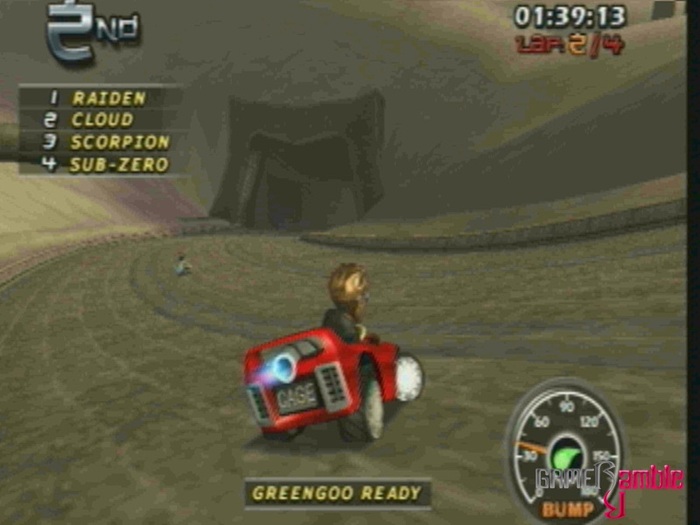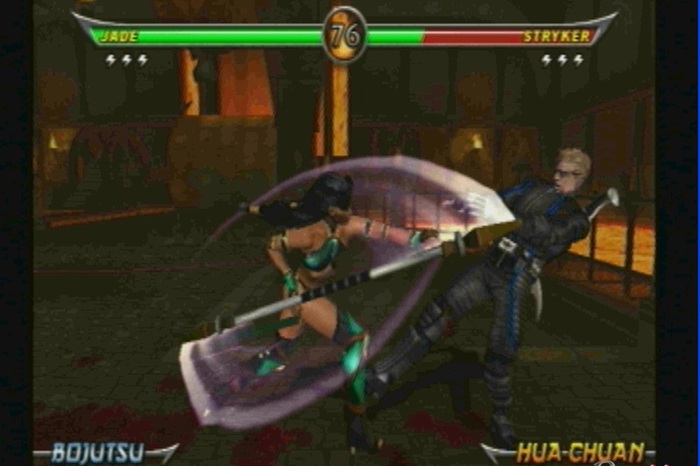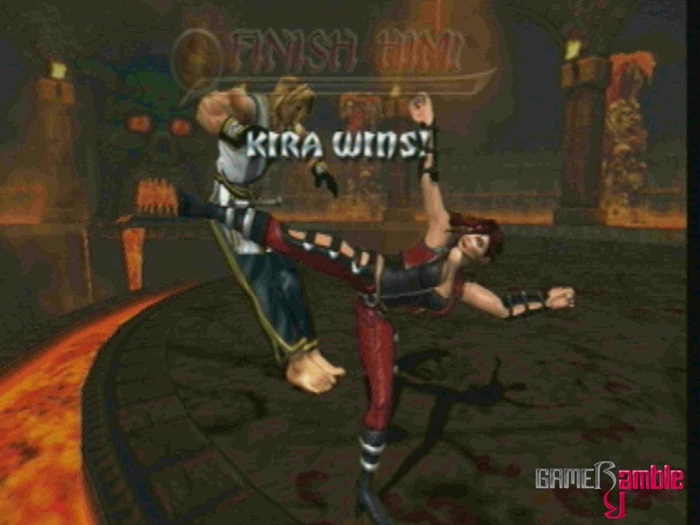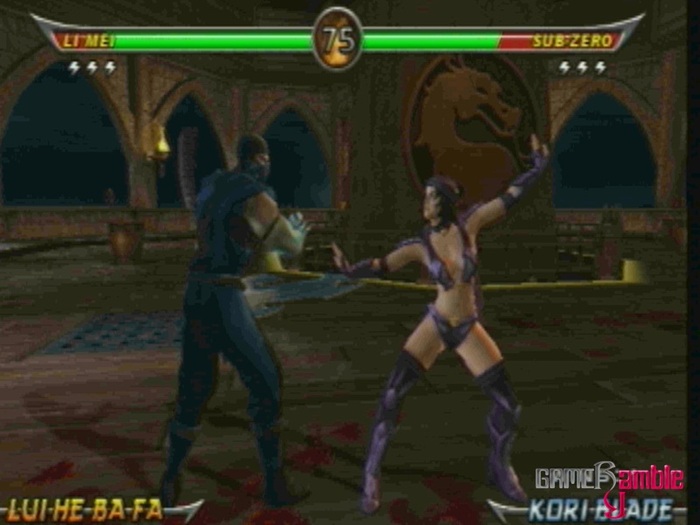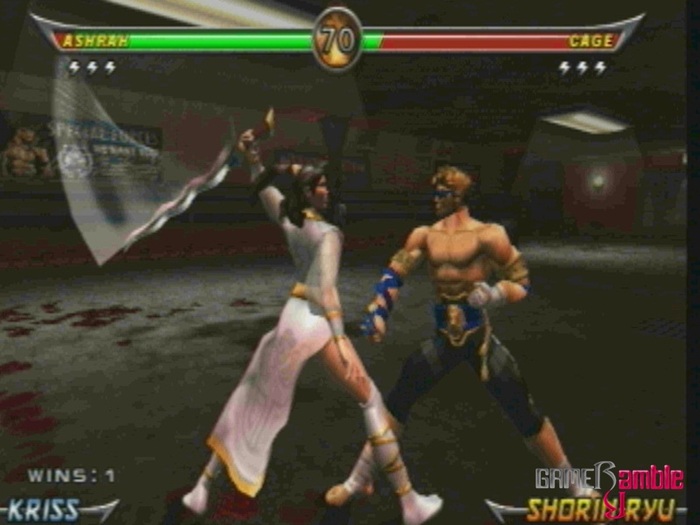Mortal Kombat: Armageddon
Developer: Midway Games | Publisher: Midway Games | Release Date: 2006 | Genre: Beat ‘Em Up | Website: N/A | Purchase: Amazon
It was bound to happen sooner or later. The mortal kombatants have reached such extreme levels of power through their constant fighting that their very existence puts the entire universe at threat. Suddenly in the midst of an epic clash the ground shakes as a giant pyramid rises. The flickering flame on top draws the fighters like moths. What waits for them at the summit will save the universe from Armageddon. Yes Mortal Kombat is back, incomprehensible plot and all, for its final outing on PS2. The question is will it go out with a bang or quietly fade away?
Right out of the gates Armageddon impresses with a roster of no less than 62 fighters. Most of them are available straight out of the box as well, which is either a good or a bad thing, depending on how much you enjoy “unlocking” new stuff. Personally I would have preferred “earning” more of them, but that’s just me. There’s no new characters apart from Taven and Daegon the stars of the new “Konquest” mode and throwaway entries like “Meat” and “Mocap.” The roster is impressive but smacks of quantity over quality. If the selection is not to your liking, you are free to create your own character with the surprisingly in depth creator. Most of the good stuff is locked at first, but after a while you’ll be able to create some pretty impressive freaks. Despite the huge line-up (or perhaps because of it) the quality everywhere else seems to have dropped a notch.
All thecharacters’ fighting styles have been shortened from three to two and instead of any new styles they have all just been swapped around. This makes all the fighters feel rather generic and there’s a real sense of deja vu while playing. To further hammer this point home is the new custom fatalities. Every input you make when the “Finish” screen comes up results in something gory. Arms get ripped off, spines severed, hearts removed and necks broken. The more moves you can string together before offing the foe the more coins you’ll earn as a reward. It’s a lot of fun at first, but soon grows old and call me old-school but I miss flame grilling someone with Scorpion or eating their head with Reptile. There’s at least a few new stage fatalities, so you can knock someone in front of a train for an easy victory. I was hoping to see the return of Anamalities or Friendships but this was not to be.
The actual combat feels as slow as it’s always been on PS2 and matches are largely dependant on combos. If you don’t manage to pull them off your character will just be left flailing at air while the cheap CPU trounces you. There’s a new “Aerial Kombat” feature which looks a bit out of place and characters still seem to be made out of rubber the way they bounce up when hitting the ground. You can perform three combo breakers per match and can now parry blows with a well timed press of block plus back. Overall though it’s a feeling of same old, same old. The big roid monkey that serves as the final boss is very underwhelming and the spectacular intro sets players up for epic disappointment when it comes to endings. Each character just performs a short kata while the narrator drones on about them becoming a god. It feels cobbled together and often out of character. Even a few static pics like in the first few titles would have been preferable to this.
The visuals are ok, but far from cutting edge and the recycling of characters and animations are painfully obvious. The arenas are nice with plenty of traps, breakables and long drops to send opponents flying. A lot of the arenas from previous games make a return which just adds to the fact that the game feels more like a compilation than a sequel. It’s definitely not a step up for the franchise. Extras include “Motor Kombat” which is a gag take on the mascot karting genre. It’s worth taking a quick spin around every track, but despite a few cool touches looks and feels like a PSone title. I definitely miss the puzzle game from the previous title. Konquest mode makes a return and it’s actually now a full fledged mode instead of just a glorified tutorial. The lead character Taven is the son of Edenias protector and must prove himself worth following in his deity father’s footsteps. This mode borrows most of its ideas, not to mention some graphics, from “Mortal Kombat: Shaolin Monks” which is not necessarily a bad thing. The story is not particularly gripping, but at least its a try. The mode is pretty short and very linear, but beating the groups of enemies is fun. Some of the environmental hazards like spinning blades sorely test my patience due to the controls not being particularly responsive but overall this mode was ok.
While playing any of the modes you’ll still be earning currency, which can be spent on new parts and accessories for the create-a-fighter mode or blown in the Krypt. The Krypt is a bit of a letdown this time round as not only is there less content, but the element of surprise has been taken away. Everything is now clearly marked so you know exactly what you’ll be getting for your coins. Most of the good stuff can be unlocked during Konquest mode in any case so your coins are best saved for the character creation.
The audio is typical Mortal Kombat, with over the top screams and loads of gory sound effects. However, there’s been plenty of recycling, which is pretty obvious if you’ve been spending a lot of time playing the previous games. That’s pretty much the problem with the entire game, it’s not bad, it just feels like the last three Mortal Kombat games were thrown into a blender and stuffed into a box. As filler or for people unfamiliar with Deadly Alliance, Deception and Shaolin Monks this is great, but it’s certainly not what everyone else was eagerly anticipating. Instead of the big, memorable finale Midway has instead opted to throw everything but the kitchen sink at this game and see what sticks. There’s a lot of content here so you’ll be getting value for money, but the PS2 deserved a better farewell.
*Review originally published December 2006.


